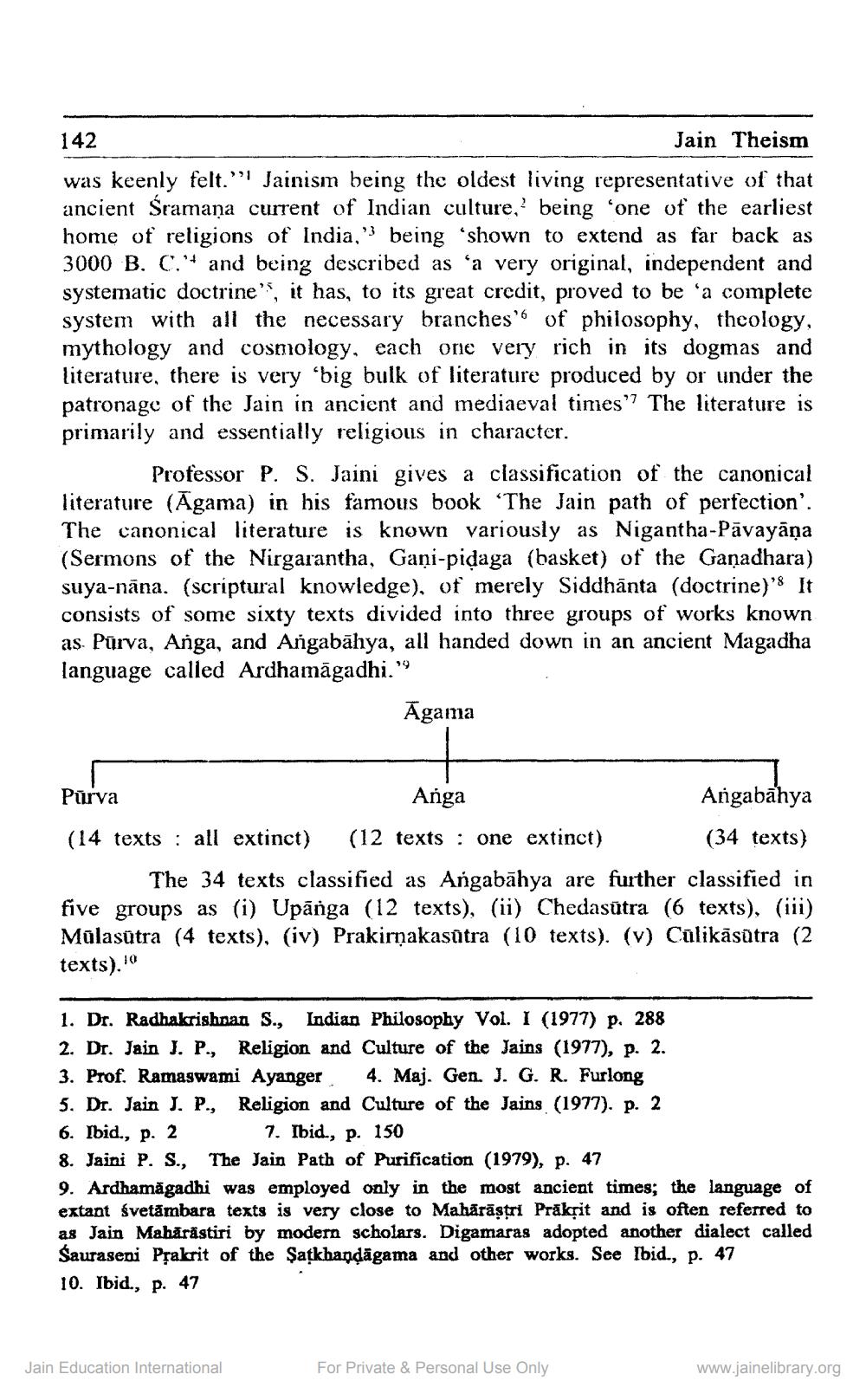________________
142
Jain Theism was keenly felt."" Jainism being the oldest living representative of that ancient Sramana current of Indian culture, being one of the earliest home of religions of India,'being 'shown to extend as far back as 3000 B. C. and being described as “a very original, independent and systematic doctrine', it has, to its great credit, proved to be a complete system with all the necessary branches of philosophy, theology, mythology and cosmology, each one very rich in its dogmas and literature, there is very 'big bulk of literature produced by or under the patronage of the Jain in ancient and mediaeval times'? The literature is primarily and essentially religious in character.
Professor P. S. Jaini gives a classification of the canonical literature (Agama) in his famous book “The Jain path of perfection'. The canonical literature is known variously as Nigantha-Pāvayāņa (Sermons of the Nirgarantha, Gani-pidaga (basket) of the Gañadhara) suya-nana. (scriptural knowledge), of merely Siddhānta (doctrine)'8 It consists of some sixty texts divided into three groups of works known as Pūrva, Anga, and Angabāhya, all handed down in an ancient Magadha language called Ardhamāgadhi."
Agama
Purva
Anga
Angabahya (14 texts : all extinct) (12 texts : one extinct)
(34 texts) The 34 texts classified as Angabāhya are further classified in five groups as (i) Upānga (12 texts), (ii) Chedasütra (6 texts), (iii) Mūlasutra (4 texts), (iv) Prakirņakasūtra (10 texts). (v) Cālikāsūtra (2 texts).'"
1. Dr. Radhakrishnan S., Indian Philosophy Vol. I (1977) p. 288 2. Dr. Jain J. P., Religion and Culture of the Jains (1977), p. 2. 3. Prof. Ramaswami Ayanger 4. Maj. Gen. J. G. R. Furlong 5. Dr. Jain J. P., Religion and Culture of the Jains (1977). p. 2 6. Ibid., p.
2 7 . Ibid., p. 150 8. Jaini P. S., The Jain Path of Purification (1979), p. 47 9. Ardhamăgadhi was employed only in the most ancient times; the language of extant svetambara texts is very close to Mahārāstri Prakrit and is often referred to as Jain Mabărăstiri by modern scholars. Digamaras adopted another dialect called Sauraseni Prakrit of the Satkhandāgama and other works. See Ibid., p. 47 10. Ibid., p. 47
Jain Education International
For Private & Personal Use Only
www.jainelibrary.org




